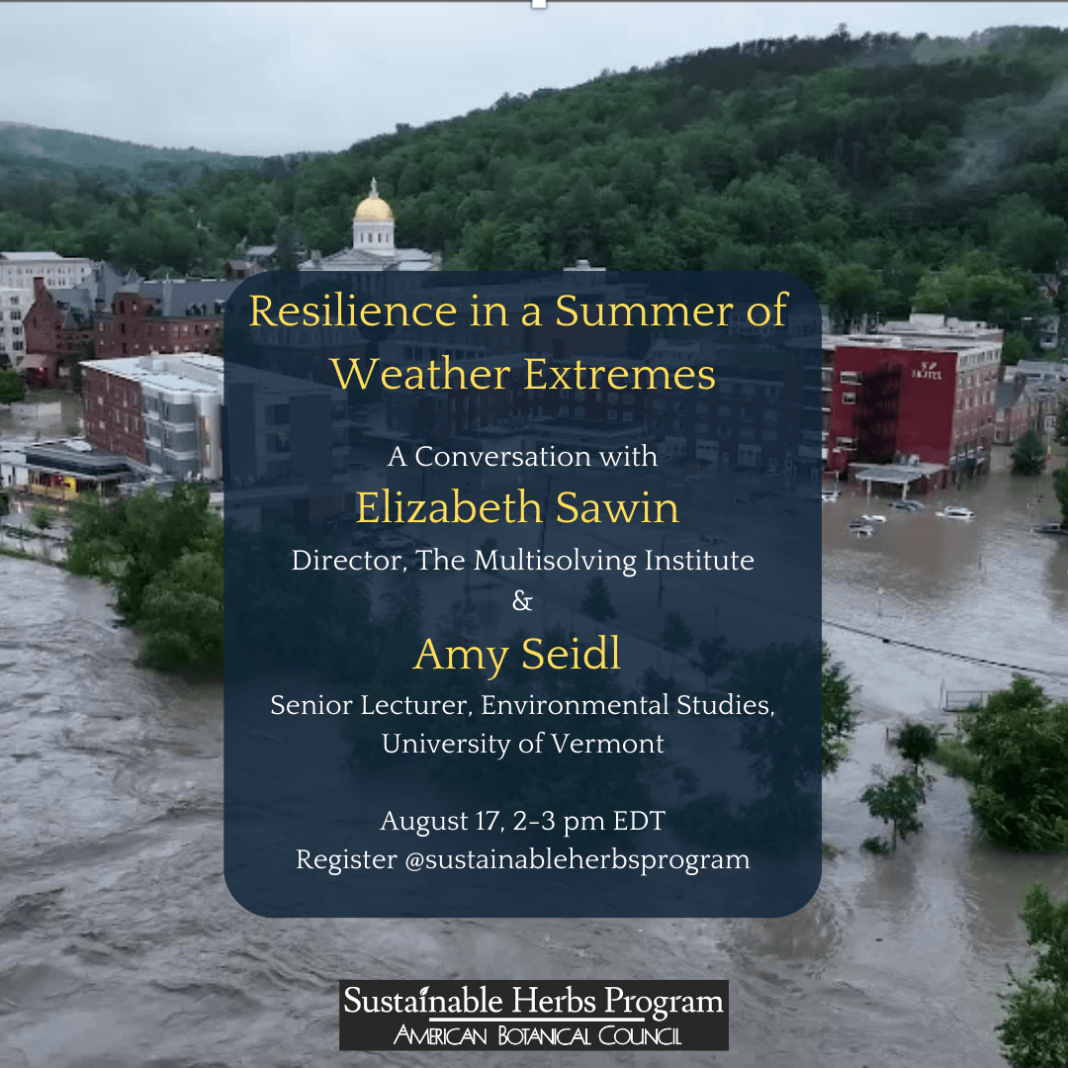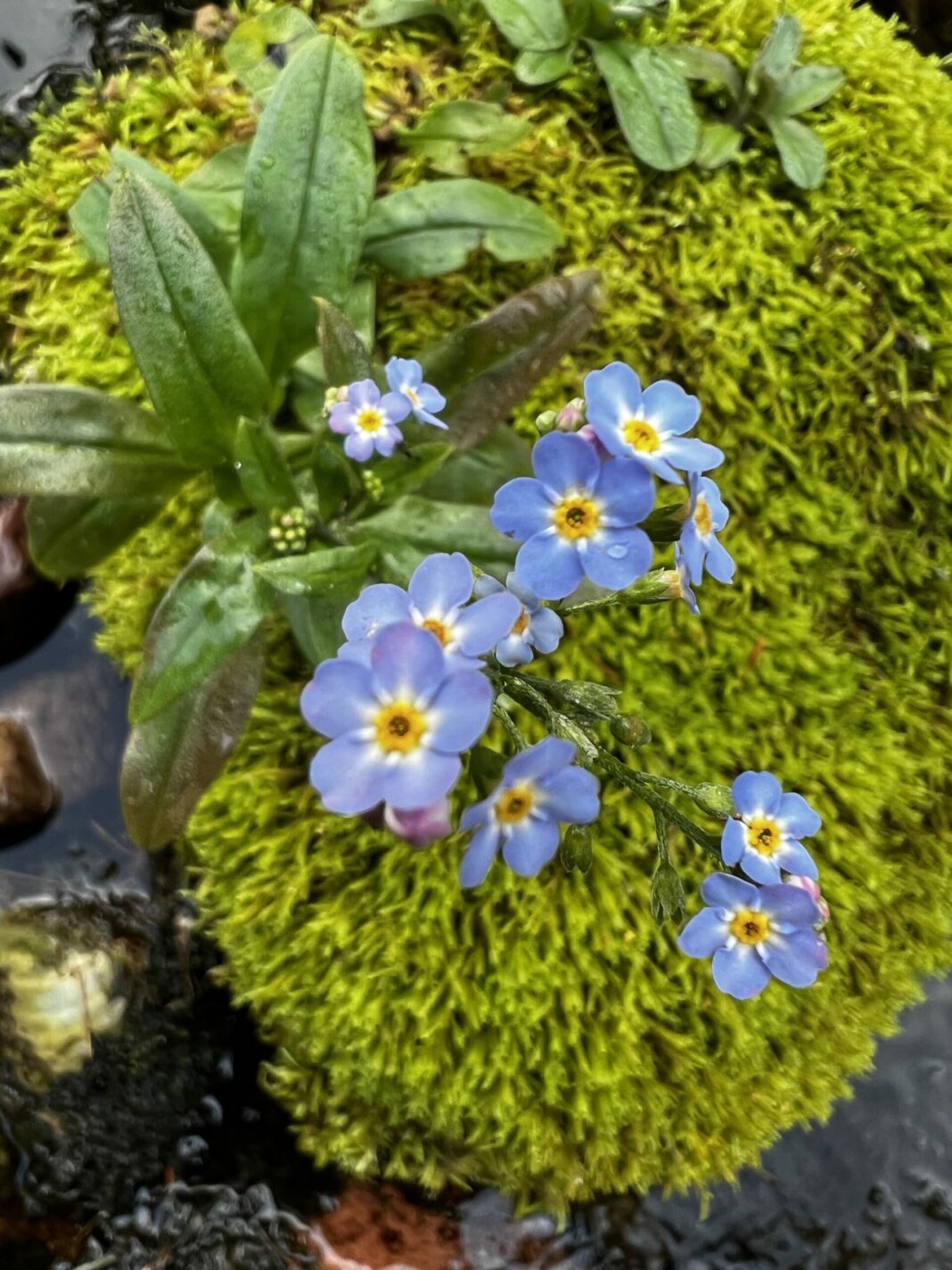Highlights from Resilience in a Summer of Weather Extremes
by Ann Armbrecht, SHP Director
I organized this webinar with Elizabeth Sawin and Amy Seidl to ask the questions that have been keeping me awake during this summer of fires and floods and heat waves: What can I do to make a difference? How can I not feel paralyzed? Where do I find courage? Who do we need to be now as people and as communities?
Below are some of the key points I am taking away from our conversation. I encourage you to listen to the full recording since they make many more valuable points beyond those highlighted here.
Building Blocks of Resilience
Beth began by sharing four building blocks of resilience in terms of multisolving, which she defined as win-win-win solutions, where one action steers toward many goals at the same time. For a fuller description of these building blocks see Multisolving for Resilience: RITA Summit Recap.
Work with Nature
For example, in the context of Vermont and a flooding disaster, work with water. Work in ways that wetlands and forest soak up and slow down water. Or greening a city so that an urban tree canopy can protect against heat waves. These examples are multisolving because they provide other benefits as well as disaster resilience. Wetlands purify water. They protect biodiversity and provide recreation.
Strengthen Community Fabric
Service oriented community organizations are often the first responders. They know who needs help and who wants to help. This is multi-solving as well because these organizations benefit the communities in many other ways.
Improve Social Equity
The zones that are more vulnerable to disasters aren’t natural features. Those are often features of marginalization in our communities and places of underinvestment. We can build disaster resilience by ensuring that all places are cared for, invested in, and have the infrastructure needed. Beth recommended the book, The Sum of Us by Heather McGhee, that looks at the importance of equity for wellbeing.
Getting Off Fossil Fuels
No matter how well we are working with nature, building our social fabric, and creating more equity, there are limits to what we can adapt to. We have to get at the root cause driver of these greater stresses and shocks. That root cause driver is the impact of fossil fuels on the climate.
Thresholds and Resilience
Amy then introduced the idea of threshold as a way to think about the resilience of our communities. The greater the distance we can create between ourselves and those thresholds, the more resilience we will have. She added that while there is a lot we can do to try to keep our distance from that threshold, sometimes we have crossed it so many times we find ourselves in a new system. And so the challenge is to look for places of resilience and also places for reinvention. How can we as humans reinvent ourselves with the 10 million species that coexist with us?
She added that for herself, it is important to be clear-eyed about the future. Not to lead to despair, but to galvanize herself to do the things Beth outlined: to maintain good relationships in her community, address equity. To reimagine what is possible. And so, say in an immediate disaster, we need to think about how to respond in an immediate way but also to ask how we can respond so that we can arrive at a place that is distant from these thresholds for as long as we can imagine?
Webs of Interconnection and Spheres of Agency
I asked how to make these ideas concrete. Beth suggested looking to web of connection. Reintegrate into those webs. That’s a long-term solution but it also applies to tomorrow. Your neighborhood is a web. Know who is in it. In webs, sometimes we are receiving and sometimes giving. And so, she said, build webs so they are there for us in both circumstances.
Amy said that she likes to think about how we each have a sphere of agency – an area where we can act and have influence. These actions can then connect with other spheres of influence that can lead to unprecedented action on a broader scale.
“Part of the antidote to despair,” Beth added, “is that no one has to do everything. But everyone has to do something.”
Imagination
Amy picked up on the idea of the gift of this moment and the imaginative muscle. She referred to Adrienne Maree Brown’s comments about how it is hard to have that imaginative muscle in the same room with fear. And fear tends to dominate. Negative framing tends to dominate. “So,” Amy said, “We need to be literate about that as we go about our day and take the time and find the people and communities that will exercise that muscle of imagination with us.”
She continued, “So without being Pollyanna-ish, it goes back to how to hold both the fact that this can be very difficult time. And this is a very difficult time for people in Maui, for Spain, for Vermont. And it can also be a time of incredible imagination because it helps us see what we’re up against more clearly, when we experience it so close. And that is a gift and an opportunity. And I think it is better for us to be open eyed about it than to turn away.”
Restoration
Amy gave an example of how powerful it is for her students to get involved in restoring natural systems. This does the short term work of reestablishing ecosystem function and returning biodiversity. It also gives students the opportunity to feel stewardship which provides them with active hope, which in turn gives them a greater sense of their own agency and ability to have an impact.
What Gives you Courage?
Beth said that to her courage is what matters, not hope. “Courage means you act no matter what. You don’t have to be hopeful to be courageous,” she said.
She continued, “I think part of courage for me is facing what is. So, it is facing the data about how far into overshoot of Earth’s limits we are right now. And it means facing how far we are from that web-world vision. That principle of equity and mutuality and shared responsibility to one another is not the structure of our world in general. We are organized around white supremacy. In my country, we are organized around patriarchy and extractive capitalism. Those are all violations of web-like living. And so, for me courage means seeing that we can’t have that beautiful web that’s going to support us all through difficult times unless we deconstruct the belief systems and structures that are antithetical to that web-like vision.”
Social Infrastructure
Amy shared a case study from Chicago that she uses in her classes. It turns out more people die from heatstroke than from natural disasters which means that places like Chicago and other dense urban areas are particularly prone and vulnerable to high heat index. The study compared people who had deep social infrastructure: they checked in on one another, they knew one another, they had neighborhood gatherings; with one that didn’t have that social infrastructure but had a lot of technological wherewithal: they had air conditioners. They had food on hand, resources, etc.
The study compared the mortality and morbidity between the two communities, one well-resourced technologically, one more socially resourced, after a heatwave. They found no difference in the effect of that heat wave on those two communities, regardless of the greater technological support. “We live in a context that is dominated by the belief that technology is the solution. But it turns out that social technologies can be as robust, if not more so,” she concluded.
Connections and Emergence
Beth mentioned a quotation she has in her office from Grace Lee Boggs, an activist for racial justice and equity in Detroit. “In this exquisitely connected universe, it’s never a matter of critical mass, it’s always a matter of critical connections.”
“This connects with the property called emergence in systems theory,” Beth said. “And it’s amazing, it’s powerful… But it’s also pretty unpredictable, right? I know, there’s a part of me that wants this pathway to how it’s all going to be okay, and how we’re going to reach the right scale, and who’s going to do what. I spent a lot of my career trying to figure that out.
But these days, I just rely on the knowledge that the place you can act is the place where you are. And the realization that the way systems change is by creating connections. We know we have all these broken connections, whether it’s people in nature, people with each other – I mean, what’s white supremacy, except broken connections among people? And so part of it, I think, is to pick where you are. See what you’re good at, what you love to do, and do that part. And trust that’s the part you have to do. And then I can let go into the power of emergence.”
The post Resilience: Strengthening the Web appeared first on Sustainable Herbs Program.


